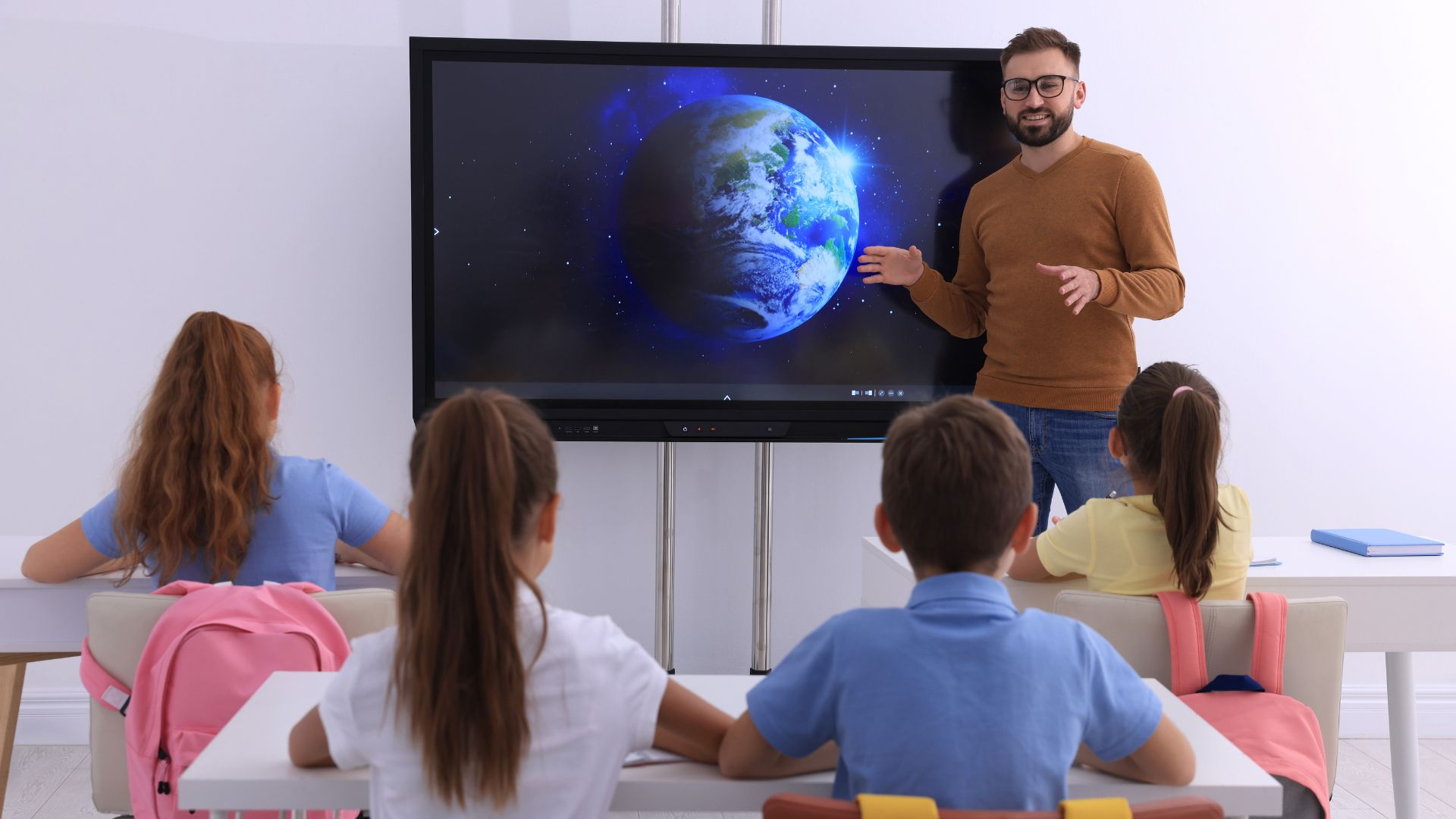Imagine a classroom not confined by four walls, but stretching infinitely across oceans and continents. Picture students buzzing with excitement, not just from the hum of fluorescent lights, but from the vibrant kaleidoscope of voices and faces on the Interactive Flat Panel (IFP) screen. No longer tethered to textbooks and solo projects, they’re globe-trotting explorers, learning alongside peers from distant lands, their ideas echoing across classrooms in a symphony of shared discovery. This, my friends, is the magic of IFPs as catalysts for global collaboration.
Forget the days of pen pals and snail mail exchanges. IFPs become portals, windows into bustling classrooms across the globe. Imagine students in Tokyo dissecting virtual frogs alongside classmates in New York, the IFP screen a shared laboratory, languages no barrier to the thrill of scientific exploration. (A 2023 study by the Global Education Network found that using IFPs for international science collaborations led to a 42% increase in student engagement and a 35% improvement in cross-cultural understanding.)
But the journey doesn’t end in science labs. IFPs become stages for cultural exchange, virtual bridges where students share traditions, music, and stories, their laughter and curiosity weaving a tapestry of understanding. Imagine Indian students performing a vibrant Rangoli dance for their peers in London, the vibrant colors and rhythmic steps transmitted live through the IFP, erasing distance and sparking curiosity about diverse cultures. (A 2024 report by the Center for Intercultural Learning revealed that using IFPs for cultural exchange projects led to a 47% increase in student appreciation of diversity and a 38% improvement in empathy and social-emotional skills.)
The IFP doesn’t just connect classrooms; it ignites global problem-solving. Imagine students in Brazil brainstorming solutions to climate change with classmates in Kenya, their ideas bouncing across screens, fueled by shared concern and the power of collective action. (A 2022 survey by the World Future Council found that using IFPs for international collaborative projects focused on global challenges led to a 51% increase in student leadership skills and a 42% improvement in critical thinking and problem-solving abilities.)
So, to all the educators yearning to break free from the confines of their classrooms, listen up! The IFP awaits, beckoning you to join a global learning community, where classrooms are continents, students are global citizens, and every lesson transcends borders to weave a tapestry of shared knowledge, understanding, and action. Grab your passports, young explorers, and prepare to navigate a classroom without limits, where every IFP screen becomes a window to the world, and every project a journey that connects hearts, minds, and futures across the globe.
Remember, education isn’t just about individual learning; it’s about building bridges, fostering empathy, and tackling global challenges together. Embrace the power of IFPs as catalysts for global collaboration, and watch your classroom transform into a launchpad for young ambassadors, where every lesson becomes a passport to a more connected, understanding, and collaborative world.
Sources:
- Global Education Network (2023) “Interactive Flat Panels and International Science Collaboration: A Study on Student Engagement and Cross-Cultural Understanding”
- Center for Intercultural Learning (2024) “The Power of Cultural Exchange: A Report on Using IFPs for Shared Learning and Appreciation of Diversity”
- World Future Council (2022) “Survey on IFPs and Global Problem-Solving: Collaborative Projects and Their Impact on Student Skills and Leadership Development”


